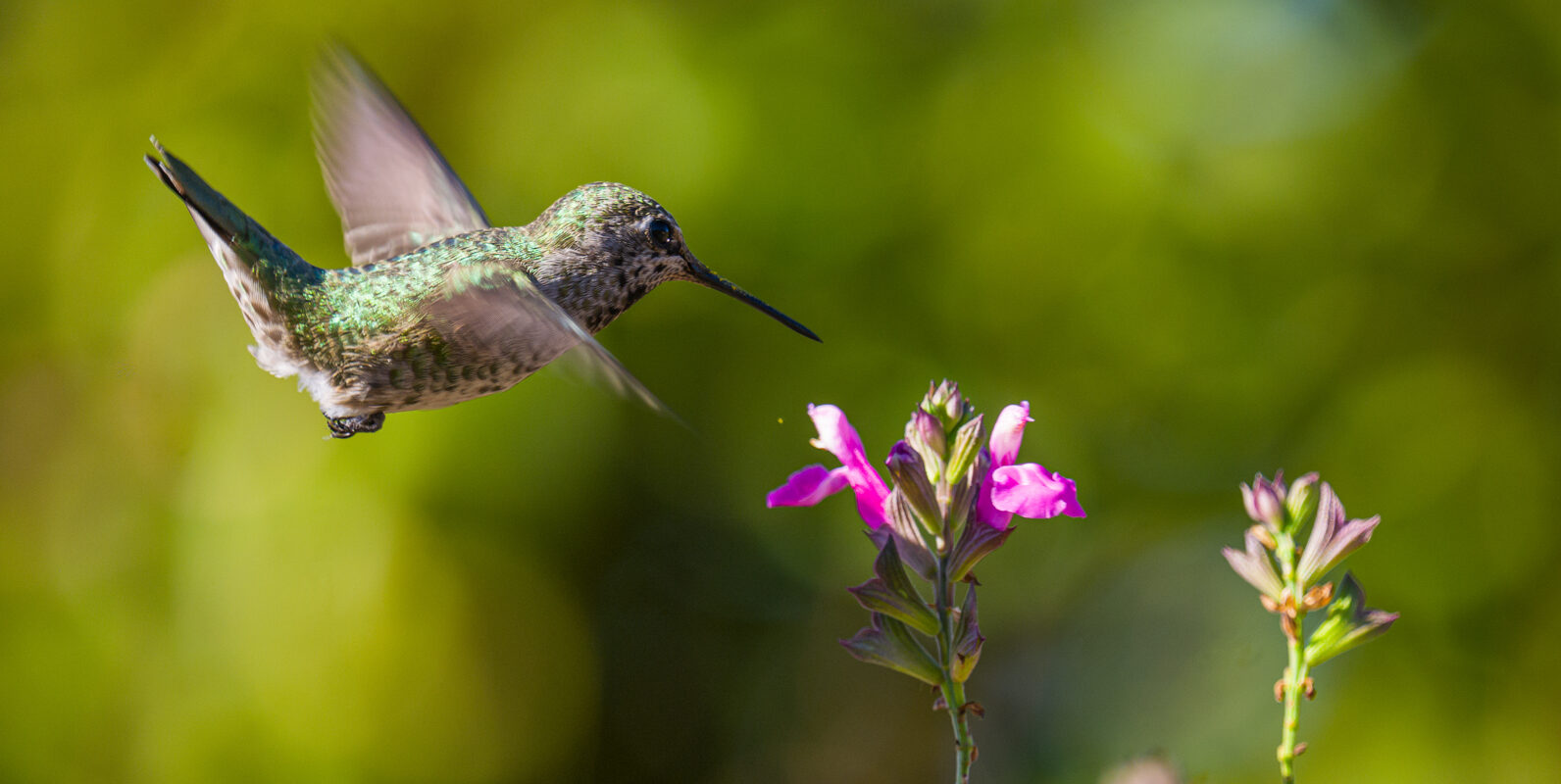Farmers love a challenge. Their lives’ work is at the mercy of Mother Nature—every day of every year. Brent Young, who leads all agricultural operations at Jordan, spent the last two years facing the greatest challenge of his career. It wasn’t the pandemic, planting thousands of grapevines or creating a fire protection plan led by cattle. It was planting wildflowers. In honor of Pollinator Week (June 19-25), we wanted to share an inside look at creating pollinator sanctuaries at Jordan Winery.
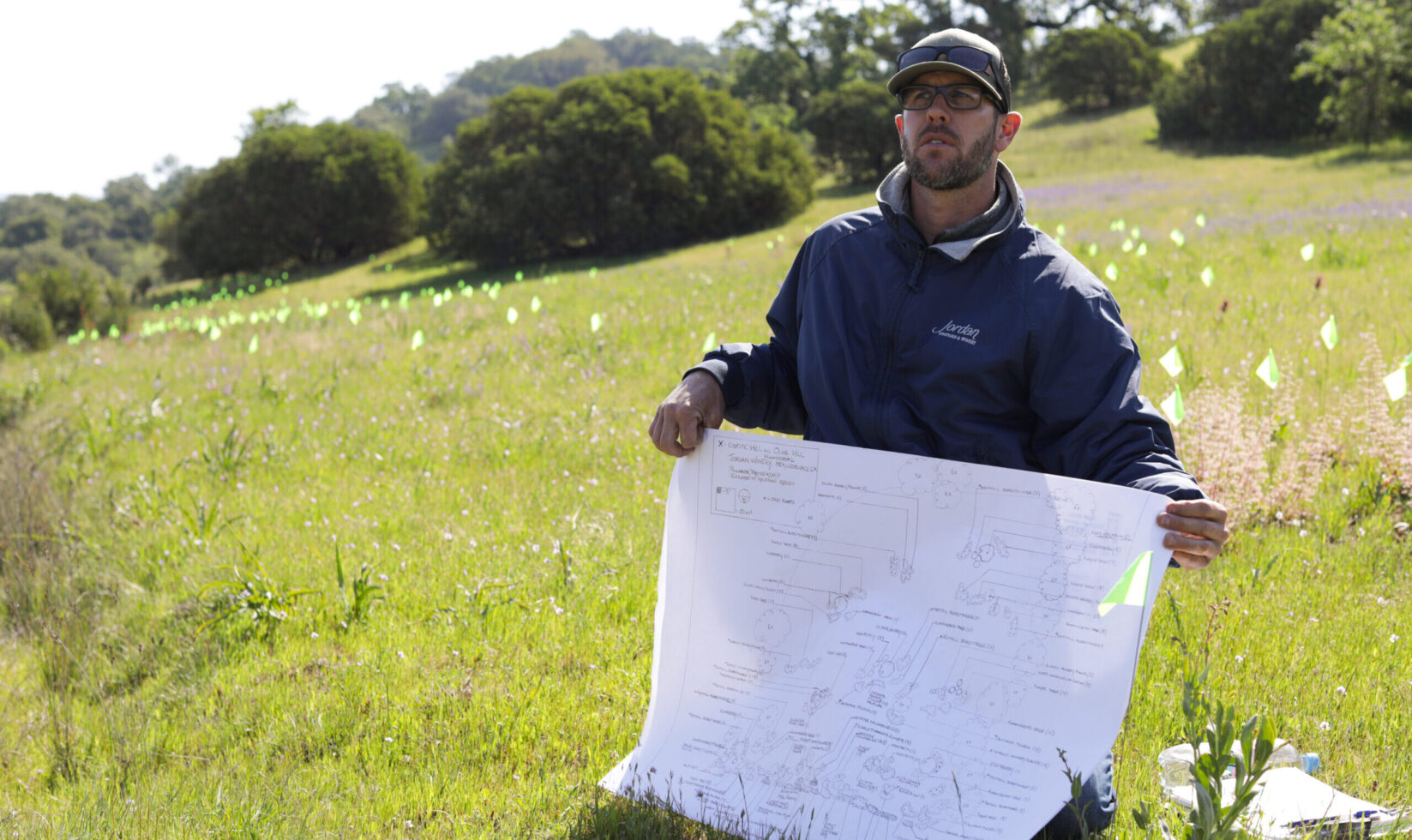
After sharp declines in the Western monarch butterfly population made international news headlines in 2019, Jordan Winery took action to create native plant habitats for bees, butterflies and other vital pollinators. Because Brent is an expert in growing grapes and other fruits, as well as vegetables, he embraced the challenge of being the caregiver for more plants on the Jordan Estate. About 3,400 more plants, to be exact. Over 24 months during the pandemic, Brent worked with San Francisco-based Pollinator Partnership, the world’s largest nonprofit dedicated to the protection and promotion of pollinators and their ecosystems, to determine the best locations to create habitats across the vast winery estate. If you follow @jordanwinery on social media, you know owner John Jordan loves to build things—outdoor tasting spaces, new guest suites and now a new lobby—and the concept of cutting corners is not in his DNA. Rather than adding a few small pollinator habitats near the garden or the chateau with easy access to water, John approved the planting of eight acres of pollinator sanctuaries across four sites of open land. That’s six football fields. Brent’s team planted 3,400 plants from 100 species, and scattered 200 pounds of wildflower seeds across four sites. Each is dedicated to a different pollinator group: one for hummingbirds, one for native bees, one for native bees and butterflies, and one for monarchs and other butterflies. They paid special attention to selecting plants that support specific pollinators and finding suitable sites for those plants near creeks or lakes—because there would be no irrigation.
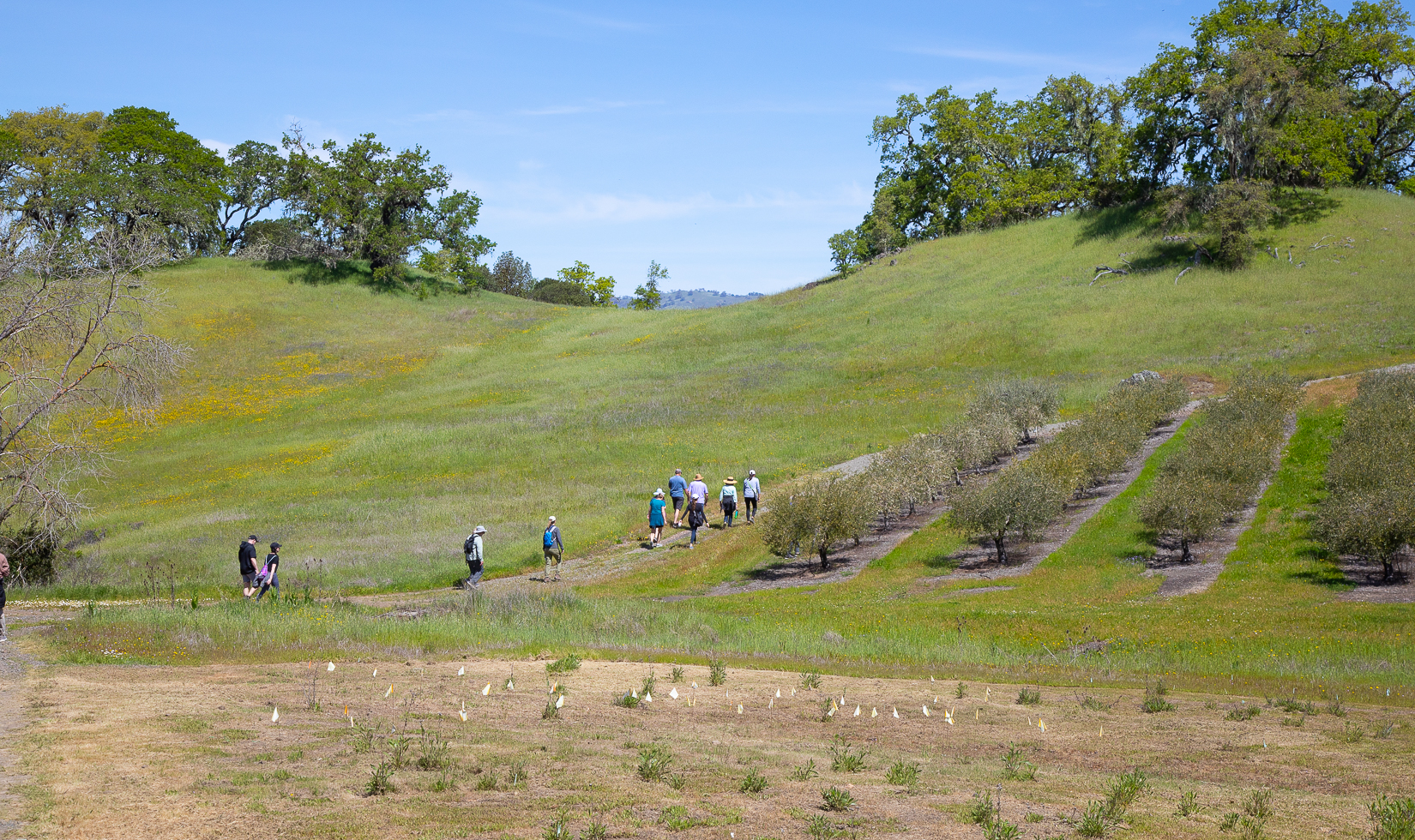
“We are trying to establish native species naturally with planting and sowing seeds on a large scale,” Brent says. “This model will work as long as we get rain.” In 2020, the winter rains didn’t arrive until March, and even then, it wasn’t enough. August, September and October of that year were the state’s warmest on record. Sonoma County’s 2020-2021 rain year was the driest, according to the Sonoma County Gazette, and 2022 was the second-driest year on record in Sonoma County since reporting began 128 years ago. This is not the kind of record-breaking news anyone, especially a farmer, wants to hear.
“You have to remember that Mother Nature is in control,” Brent says. “She takes her time. This is going to be a slow process.” Veteran Jordan vineyard foreman Manuel Lemus, who has worked at the winery for more than 40 years, watered the young pollinator sanctuaries by hand at least once a week. But when duties of the vineyard, such as thinning grapes during veraison, took priority during summer, the pollinator sanctuary plants had to fend for themselves in the face of a historic drought. Billy Synk, pollinator habitat specialist for Pollinator Partnership has been working in habitat restoration for 13 years in Northern California and has observed dramatic changes in the amount, frequency and distribution of seasonal rain. “Natives are still the ideal species to grow long-term because they have evolved here, in a place where it doesn’t rain from May to November. When you find a plant blooming in late fall, that hasn’t seen water in months, it’s really fascinating. But, it has gotten much harder to get the plants established.”
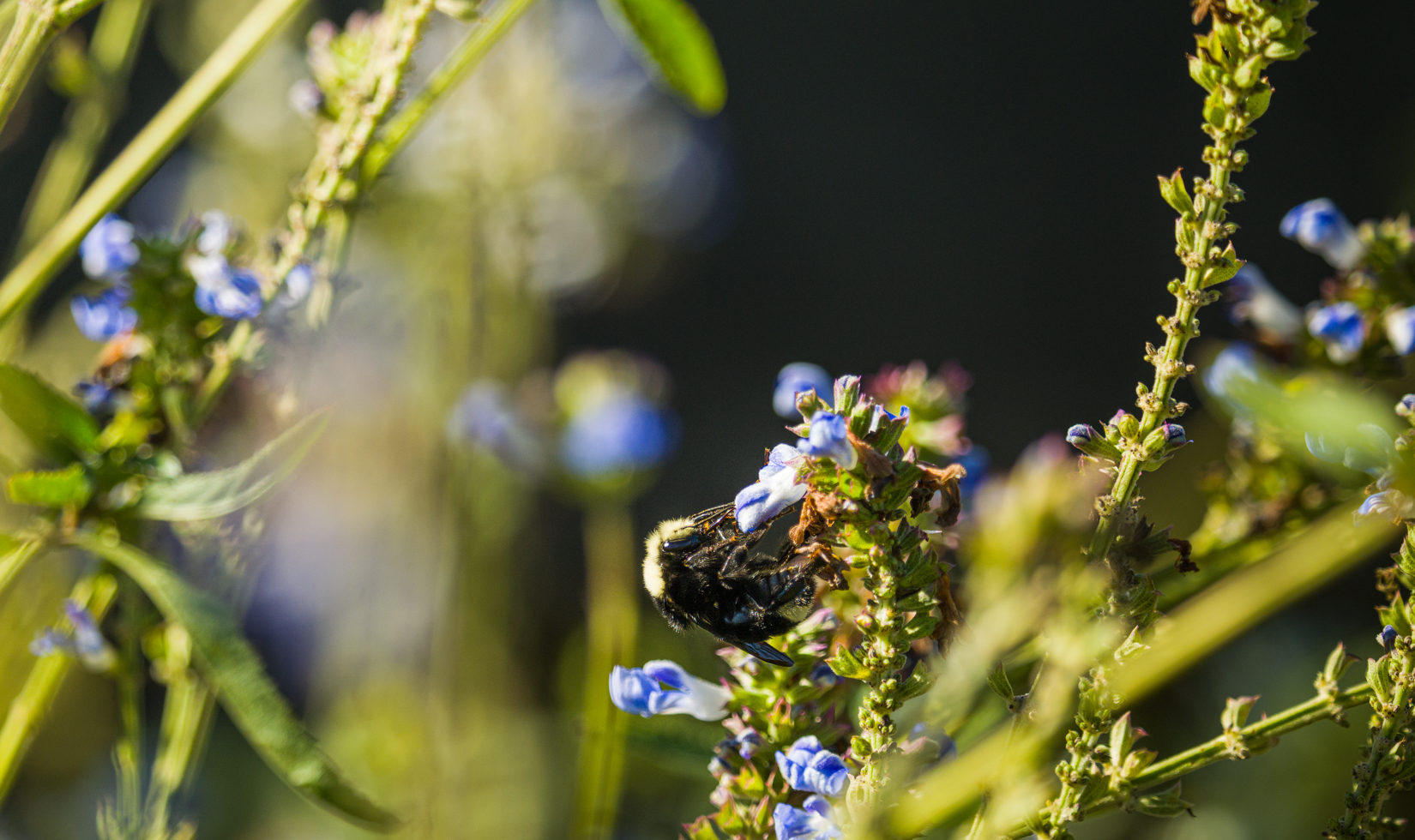
Billy and his colleagues from Pollinator Partnership visited the Jordan sanctuaries for their first post-planting survey in fall of 2021. “The number of plants that were alive really impressed me,” Billy says. “Of course, we’re all disappointed when we don’t have a high rate of survival. But when you factor in this level of drought, it’s hard to imagine anything would have survived. These plants are quite resilient. They surprise me every year.” Pollinator Partnership estimates that a pollinator sanctuary planted and sowed under ideal weather conditions should have an average success rate of at least 75% after one year. At Jordan, the planting survey found 23% of plants thriving in one sanctuary, about 18% in two others and just 5% in the sanctuary dedicated mostly to milkweed for monarchs. Top-performing plants included lupine species and California poppy, which support hummingbirds and bees; Western goldenrod, blue-eyed grass and coyote brush, which support native bees; and narrow leaf milkweed and yarrow, which support butterflies. Some patches of monkey flower, penstemon and fuchsia had survival rates in the hummingbird sanctuary of 90%. Brent remains optimistic. “When we plant a pumpkin or a tomato in the garden, we know what’s going to work,” Brent says. “We introduced all of these species that were not here before and even if we are reestablishing natives, they had disappeared for a reason. The scale for success is totally different when you’re working with plants you’ve never grown before. We have learned so much, and we aren’t giving up. We will keep trying.” Besides the drought, another hurdle Brent and his team must overcome is getting the native plants to regrow in wild meadows where wild oats—the ubiquitous, invasive grass that gives California’s golden hills their summer color—have been the dominant plant species for decades or longer.
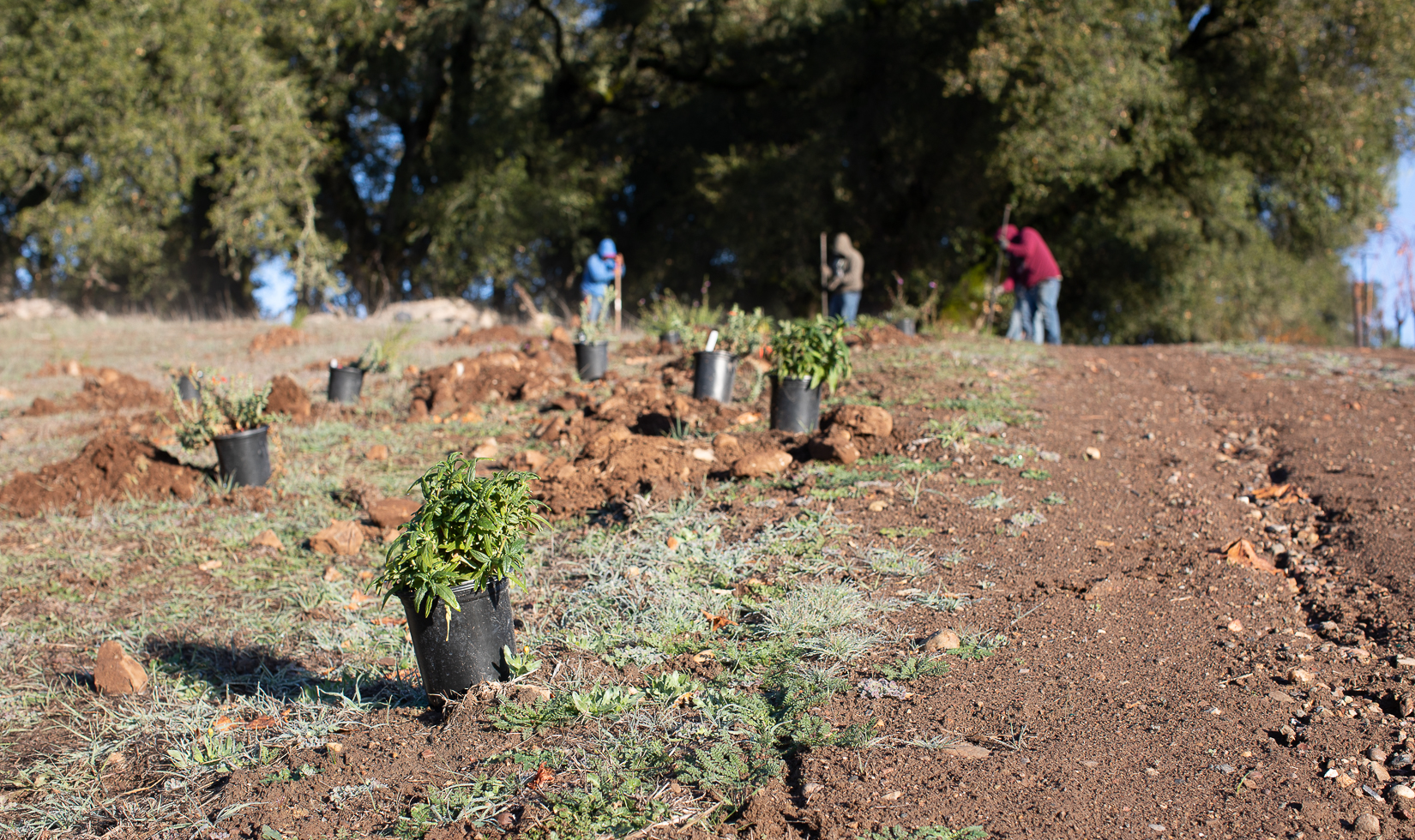
“It’s been rewarding to see farmers and makers getting involved in other sustainable efforts like planting habitat or carbon sequestration,” Billy says. “Grape growers, cotton farmers, tree nut, melon, cucumber and tomato farmers—this isn’t their core business, but they are making major investments in supporting the pollinator cause and the embracing the climate challenges.” The next pollinator sanctuary is already in the ground and Brent is bullish about the potential. With the help of Pollinator Partnership, Jordan received a grant for 370 more plants, which were planted in December 2022 next to the Chateau Block Vineyard. Brent plans to experiment with a drip irrigation system that will receive water by way of tanker truck, but deliver the water through one-gallon emitters. This is a more efficient and precise delivery of water during the root establishment phase of the plants. Toyota USA funded the grant as part of its efforts to support habitat restoration. With adequate rainfall and early-life irrigation, Billy believes the habitat will survive long-term without supplemental water. California received record-breaking rainfall this winter, so the outlook for the future of Jordan pollinator sanctuaries is optimistic.
“We need more pollinator habitats out there, so habitat in any location is a step in the right direction,” Billy says. “Learning the hard way is a great way to learn. Failures are steps on the way to success.
To learn more about wildlife at the Jordan Estate, be sure to read through our latest edition of our annual magazine, Wine Country Table: “The Land Issue.”
